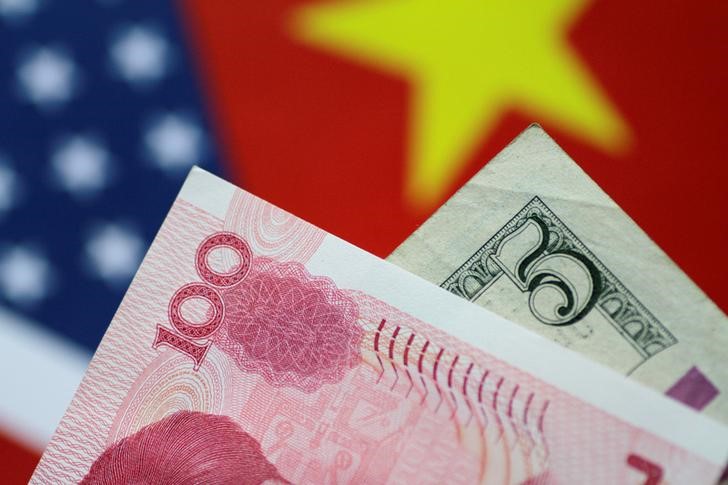Investing.com– Most Asian currencies firmed slightly on Wednesday tracking a stronger-than-expected reading on Chinese economic growth, although fears of an escalation in the Israel-Hamas war limited any major gains.
Renewed fears of higher-for-longer U.S. interest rates also remained in play after a stronger-than-expected reading on for September, which markets feared could factor into stickier inflation.
Still, trade-heavy currencies, particularly those exposed to China, saw some gains following a strong reading on third-quarter gross domestic product (GDP). The rose 0.2%, as did the and .
The was flat around 149 to the dollar, with focus remaining on a potential breach of 150, which is expected to attract currency market intervention by the government.
The languished above 83 to the dollar, facing renewed pressure from a spike in oil prices.
Chinese yuan firms on Q3 GDP beat, but sentiment remains weak
The rose 0.1%, while the added 0.2% after data showed third quarter grew more than expected. also accelerated from prior quarter, indicating that some stimulus measures from Beijing were bearing fruit.
But underlying Chinese economic growth- while seeing some improvement, still remained largely below pre-COVID levels, with the third-quarter GDP figures only showing some signs of progress.
Optimism over the GDP reading was offset by persistent concerns over a debt default in China’s property sector, especially as beleaguered developer Country Garden (HK:) faces a repayment deadline this week.
Concerns over a renewed trade war with the U.S. also dampened optimism towards China, after the White House unveiled new curbs on the export of artificial intelligence chips to China.
Dollar steadies, rate hike expectations rise before Powell speech
The and weakened slightly in Asian trade, but remained close to 11-month peaks. Data released overnight showed that U.S. retail sales grew more than expected in September, pushing up concerns over sticky inflation, which could keep the Federal Reserve hawkish.
This also came before a string of Fed speakers this week, most notably on Thursday. Markets remained wary of any more hawkish signals from Powell, after he signaled higher-for-longer rates at the Fed’s September meeting.
Higher U.S. interest rates had battered Asian currencies over the past year, and are likely to limit any major recovery in the space until the Fed begins cutting rates in earnest.
Read the full article here



